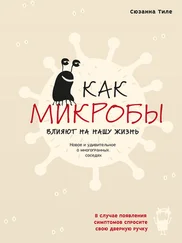A. P. Hungin et al., “Systematic Review: Probiotics in the Management of Lower Gastrointestinal Symptoms in Clinical Practice – An Evidence-Based International Guide,” Alimentary Pharmacology & Therapeutics 38, no. 8 (October 2013): 864–86.
N. P. McNulty et al., “The Impact of a Consortium of Fermented Milk Strains on the Gut Microbiome of Gnotobiotic Mice and Monozygotic Twins,” Science Translational Medicine 3, no. 106 (October 26, 2011): 106ra106.
H. J. Kim et al., “A Randomized Controlled Trial of a Probiotic Combination VSL# 3 and Placebo in Irritable Bowel Syndrome with Bloating,” Neurogastroenterology and Motility: The Official Journal of the European Gastrointestinal Motility Society 17, no. 5 (October 2005): 687–96.
D. J. Merenstein, J. Foster, and F. D’Amico, “A Randomized Clinical Trial Measuring the Influence of Kefir on Antibiotic-Associated Diarrhea: The Measuring the Influence of Kefir (MILK) Study,” Archives of Pediatrics & Adolescent Medicine 163, no. 8 (August 2009): 750–54; R. S. Beniwal, “A Randomized Trial of Yogurt for Prevention of Antibiotic-Associated Diarrhea,” Digestive Diseases and Sciences 48, no. 10 (October 2003): 2077–82.
“Clostridium Difficile Fact Sheet,” Centers for Disease Control and Prevention, accessed September 2014, www.cdc.gov/hai/eip/pdf/Cdiff-factsheet.pdf.
I. Youngster, “Fecal Microbiota Transplant for Relapsing Clostridium Difficile Infection Using a Frozen Inoculum from Unrelated Donors: A Randomized, Open-Label, Controlled Pilot Study,” Clinical Infectious Diseases: An Official Publication of the Infectious Diseases Society of America 58, no. 11 (June 1, 2014): 1515–22; Z. Kassam et al., “Fecal Microbiota Transplantation for Clostridium Difficile Infection: Systematic Review and MetaAnalysis,” American Journal of Gastroenterology 108, no. 4 (April 2013): 500–508.
“How Well Do Vaccines Work?”, Vaccines. gov, US Department of Health and Human Services, accessed October 11, 2014, www.vaccines.gov/basics/effectiveness.
“Vaccines • Disease,” Immunization Healthcare Branch, accessed October 11, 2014, www.vaccines.mil/Vaccines.
Y. Li et al., “On the Origin of Smallpox: Correlating Variola Phylogenics with Historical Smallpox Records,” Proceedings of the National Academy of Sciences of the United States of America 104, no. 40 (October 2, 2007): 15787–92.
Rob Stein, “Should Last Remaining Known Smallpox Virus Die?”, Washington Post , March 8, 2011.
Z. Wang et al., “Gut Flora Metabolism of Phosphatidylcholine Promotes Cardiovascular Disease,” Nature 472, no. 7341 (April 7, 2011): 57–63.
A. D. Kostic et al., “Genomic Analysis Identifies Association of Fusobacterium with Colorectal Carcinoma,” Genome Research 22, no. 2 (February 2012): 292–98.
Ley, “ Microbial Ecology .”
C. A. Lowry et al., “Identification of an Immune-Responsive Mesolimbocortical Serotonergic System: Potential Role in Regulation of Emotional Behavior,” Neuroscience 146, no. 2 (May 11, 2007): 756–72.
G. A. Rook, C. L. Raison, and C. A. Lowry, “Can We Vaccinate Against Depression?”, Drug Discovery Today 17, nos. 9–10 (May 2012): 451–58.
“Conjunctivitis (Pink Eye) in Newborns,” Centers for Disease Control and Prevention, accessed October 11, 2014, www.cdc.gov/conjunctivitis/newborns.html.
J. F. Burns, “British Medical Council Bars Doctors Who Linked Vaccine with Autism,” New York Times , May 24, 2010.
“Possible Side Effects from Vaccines,” Centers for Disease Control and Prevention, accessed October 11, 2014, www.cdc.gov/vaccines/vacgen/side-effects.htm.
New York Times editorial board, “The Rise of Antibiotic Resistance,” New York Times , May 10, 2014.
M. J. Blaser, Missing Microbes: How the Overuse of Antibiotics Is Fueling Our Modern Plagues . New York: Henry Holt, 2014.
“Battle of the Bugs: Fighting Antibiotic Resistance,” US Food and Drug Administration, last modified August 17, 2011, www.fda.gov/Drugs/ResourcesForYou/Consumers/ucm143568.htm.
G. D. Wright, “Mechanisms of Resistance to Antibiotics,” Current Opinion in Chemical Biology 7, no. 5 (October 2003): 563–69.
V. J. Paul et al., “Antibiotics in Microbial Ecology: Isolation and Structure Assignment of Several New Antibacterial Compounds from the Insect-Symbiotic Bacteria Xenorhabdus Spp,” Journal of Chemical Ecology 7, no. 3 (May 1981): 589–97.
“Use of Antimicrobials Outside Human Medicine and Resultant Antimicrobial Resistance in Humans,” World Health Organization, accessed October 12, 2014, http://web.archive.org/web/20040513120635/, http://www.who.int/mediacentre/factsheets/fs268/en/index.html.
R. M. Lowe et al., “Escherichia Coli O157: H7 Strain Origin, Lineage, and Shiga Toxin 2 Expression Affect Colonization of Cattle,” Applied Environmental Microbiology 75, no. 15 (August 2009): 5074–81.
I. Cho et al., “Antibiotics in Early Life Alter the Murine Colonic Microbiome and Adiposity,” Nature 488, no. 7413 (August 30, 2012): 621–26.
Blaser, Missing Microbes .
L. Trasande et al., “Infant Antibiotic Exposures and Early-Life Body Mass,” International Journal of Obesity 37, no. 1 (January 2013): 16–23.
S. Foliaki et al., “Antibiotic Use in Infancy and Symptoms of Asthma, Rhinoconjunctivitis, and Eczema in Children 6 and 7 Years Old: International Study of Asthma and Allergies in Childhood Phase III,” Journal of Allergy and Clinical Immunology 124, no. 5 (November 2009): 982–89.
A. T. Stefka et al., “Commensal Bacteria Protect Against Food Allergen Sensitization,” Proceedings of the National Academy of Sciences of the United States of America 111, no. 36 (September 9, 2014): 13145–50.
См. сайт American Gut, www.americangut.org.
E. S. Lander et al., “Initial Sequencing and Analysis of the Human Genome,” Nature 409, no. 6822 (February 15, 2001): 860–921.
Human Microbiome Project Consortium, “Structure, Function and Diversity.”
C. Lozupone and R. Knight, “UniFrac: A New Phylogenetic Method for Comparing Microbial Communities,” Applied and Environmental Microbiology 71, no. 12 (December 2005): 8228–35.
Turnbaugh et al., “Core Gut Microbiome in Obese and Lean Twins”; M. Hamady et al., “A Core Gut Microbiome in Obese and Lean Twins,” Nature 457, no. 7228 (January 22, 2009): 480–84.
Читать дальше
Конец ознакомительного отрывка
Купить книгу
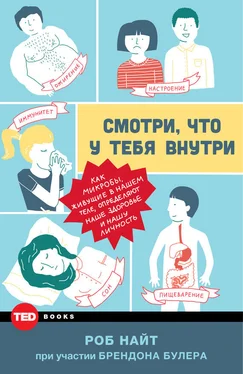
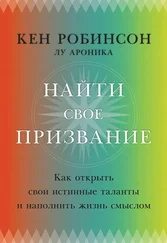


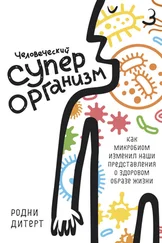
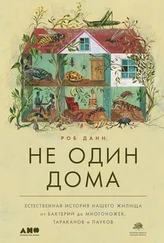
![Анна Мохова - Ты не одна [Как забыть одиночество и найти счастье внутри себя] [litres]](/books/395417/anna-mohova-ty-ne-odna-kak-zabyt-odinochestvo-i-n-thumb.webp)


